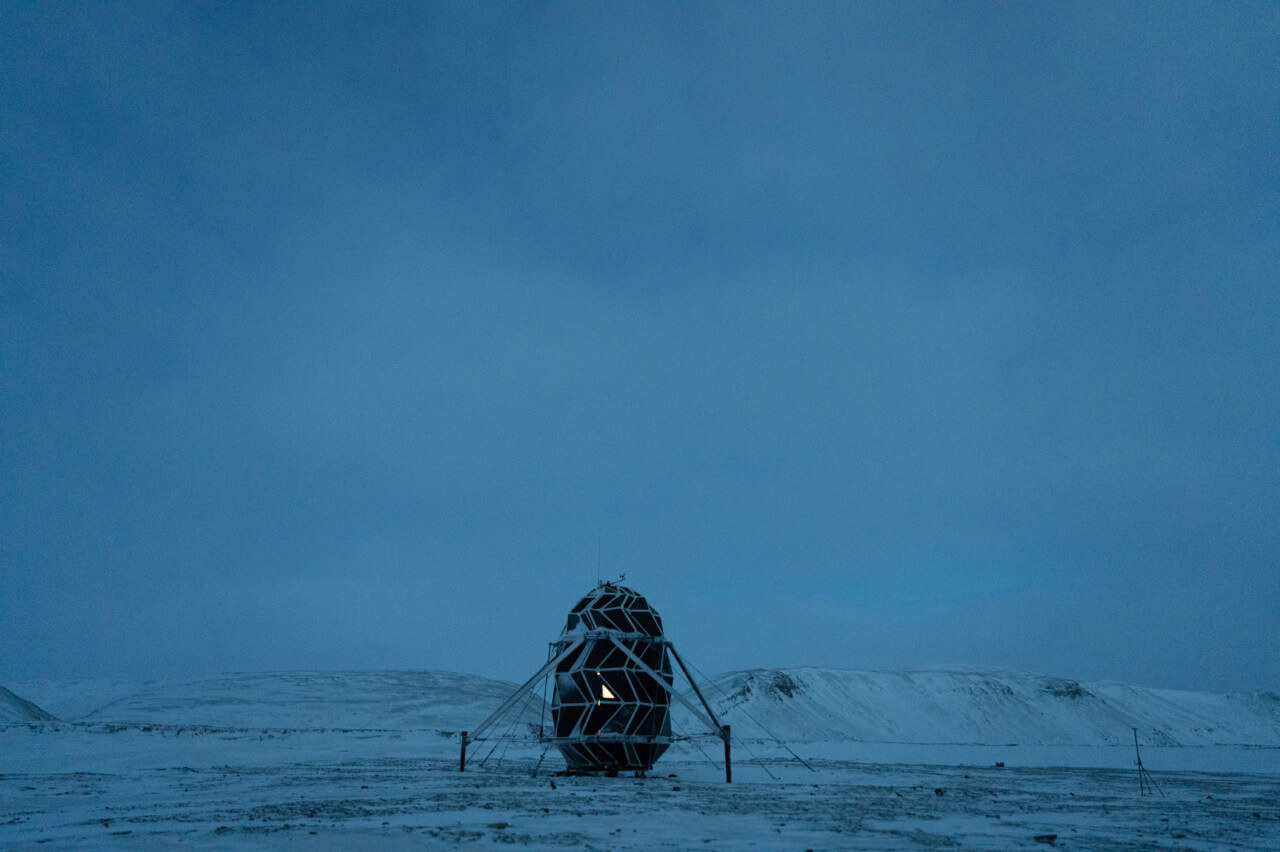In September of 2020, Sebastian Aristotelis and Karl-Johan Sorensen, founders of SAGA Space Architects, embarked on a three-month mission to Northern Greenland in hopes of simulating the experience of living on the Moon. Drawing inspiration from the tradition of origami folding and the form of a budding leaf, SAGA designed a habitat specifically for the LUNARK mission, employing folding panels that could contract for shipping purposes and expand into an ovoid form once deployed.
Unlike Bjarke Ingels Group (BIG) and ICON’s Project Olympus, or Skidmore, Owings & Merrill’s Lunar Village—proposals designed to meet astronauts’ basic needs for surviving on the Moon—SAGA’s LUNARK instead focused on how humans might live comfortably, assuming those basic needs had already been met. What distinguishes mere survival from living well? Aristotelis told AN that they set out to create a home, not just a space station for survival in a laboratory-like setting. To embody the feeling of comfort, Aristotelis and Sorensen refer to the Danish word hygge. Aristotelis described how “hygge is this feeling… imagine that you are inside a tent and it’s raining but you’re underneath a blanket, completely dry and comfortable and you can hear the sound of the rain outside.” Hygge can mean something different to everyone, but it’s a feeling that can only come if one’s basic primitive needs, such as food, shelter, and protection, have been met.

In pursuit of hygge within the habitat, SAGA employed soft interiors, comfortable lighting, colors, surfaces textures, and carefully configured spaces. The deployed habitat reached an inner volume of 607.4 cubic feet, a 750 percent volume increase on its initial folded storage volume of 77.7 cubic feet, and was partitioned into three main areas. The bottom section contained storage, food, a urine tank, and workout equipment; the middle cylinder contained desks, toilet, and a heater, and the top dome portion contained the sleeping pods and circadian light panels.
After identifying two key challenges which threatened the psychological and physical well-being of astronauts on the International Space Station, insomnia and monotony, SAGA worked closely with lighting manufacturer Louis Poulsen to develop an artificial circadian light system for the interior of the LUNARK habitat. The custom-sized LED panels were designed to be able to emulate the phases of a natural light environment, simulating dawn, sunrise, daylight, sunset, and dusk. To further combat monotony, they were programmed to vary between days, employing different light intensities to mimic weather conditions such as sunny and overcast skies.
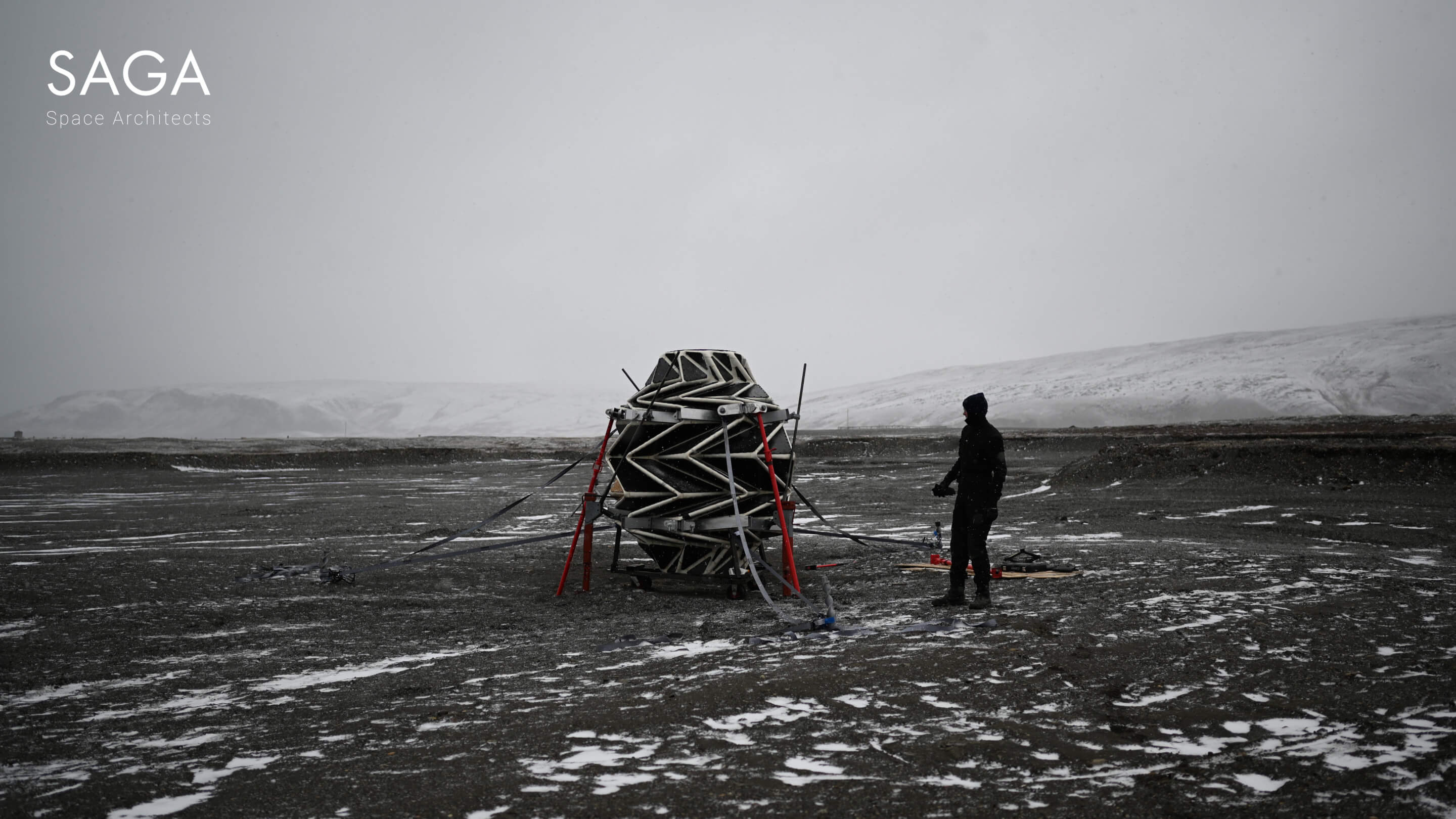
When asked if an optimal lighting environment had been determined, Aristotelis told AN that no such environment existed; the inability to control or predict the weather patterns simulated by the panels was more critical than finding an optimal setting. Team members in Denmark maintained full control of the weather programming, though halfway through the 61-day experiment they yielded to Aristotelis and Sorensen’s desire to exaggerate the spectrum of the colors to better imitate the overwhelming and intense experience of observing a sunset or sunrise from outside.
According to Aristotelis, there allegedly exists a myth that if one could control the entire climate, he or she would make every day like the best day in Hawaii. Aristotelis insisted that only through the variability and unpredictability of the weather patterns could they have derived a sense of time passing and an appreciation for the sunny days. They currently aspire towards developing a habitat that can more viscerally reproduce weather phenomena such as rain and snow.
In addition to the LED panels, Aristotelis and Sorensen utilized adjustable light sources in the habitat. Louis Poulsen’s NJP and Panthella Portable lamps offered them the flexibility to adjust their lighting preferences as needed. Aristotelis emphasized that the availability of both controllable and uncontrollable light sources contributed greatly to their comfort and emotional well-being within the habitat.
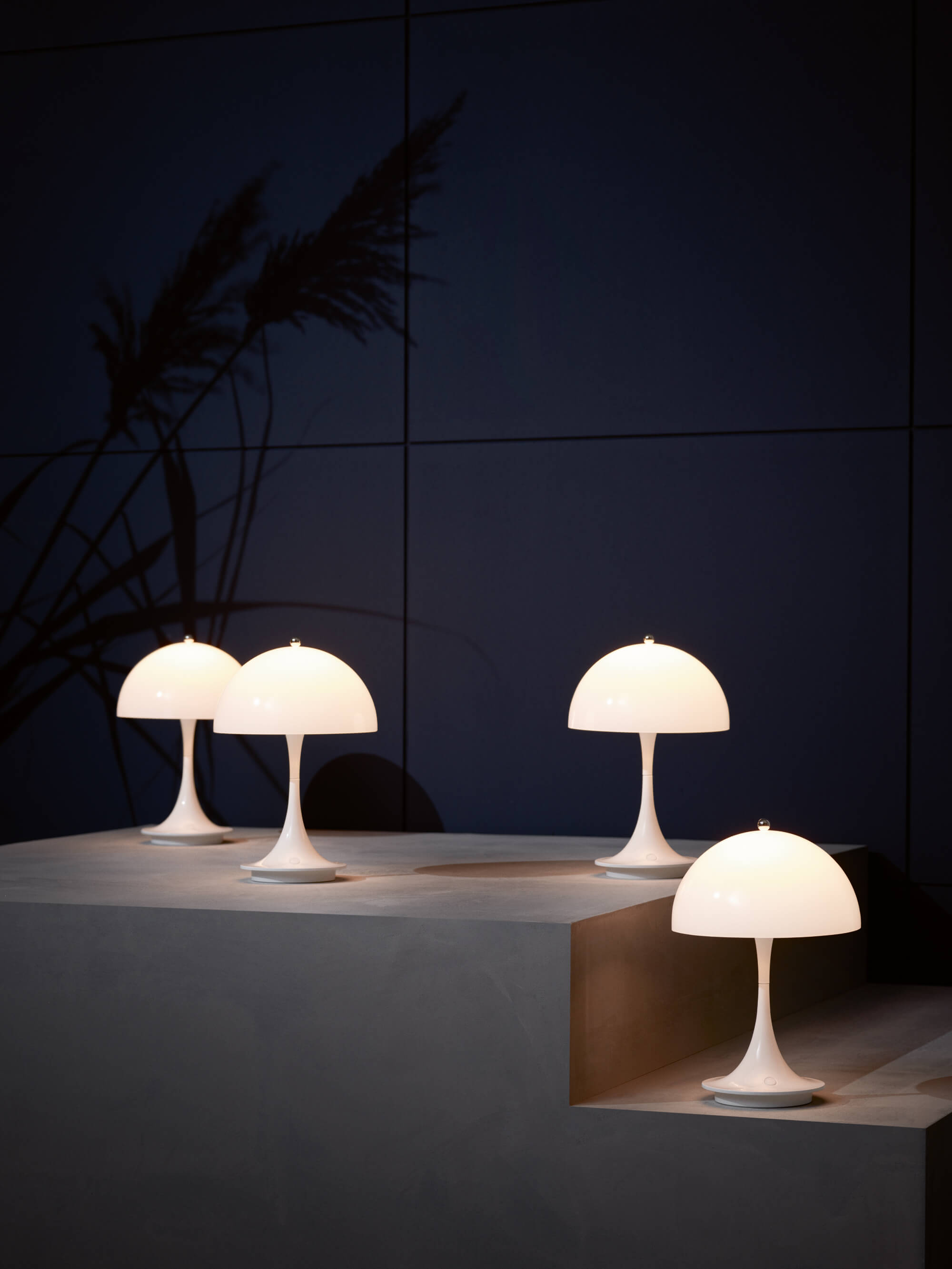
Though nowhere on Earth can closely simulate the environment of the Moon, the habitat was isolated in Greenland in a relatively barren landscape but SAGA may have benefitted from a more earnest acknowledgment of the simulation’s inherent initial limitations, and how those, in turn, impacted the resulting data and the conclusions that could be drawn from them. The mission consisted of 30 days of sunlight followed by 30 days of darkness—comparable to the 14 days of sunlight followed by 14 days of darkness on the Moon—but challenges posed by extreme temperature and pressure differentials, radiation, lack of oxygen supply, and a low-gravity environment were not present.
In support of the habitat’s purported success, Aristotelis told AN that following their stay, he and Sorensen performed better on the Spaceflight Cognitive Assessment Tool for Windows (WinSCAT), a test used on the International Space Station for assessing spaceflight cognitive performance, than professional astronauts returning to Earth. This seems an inconsequential comparison to make, however, given that there were few control variables in the experiment.
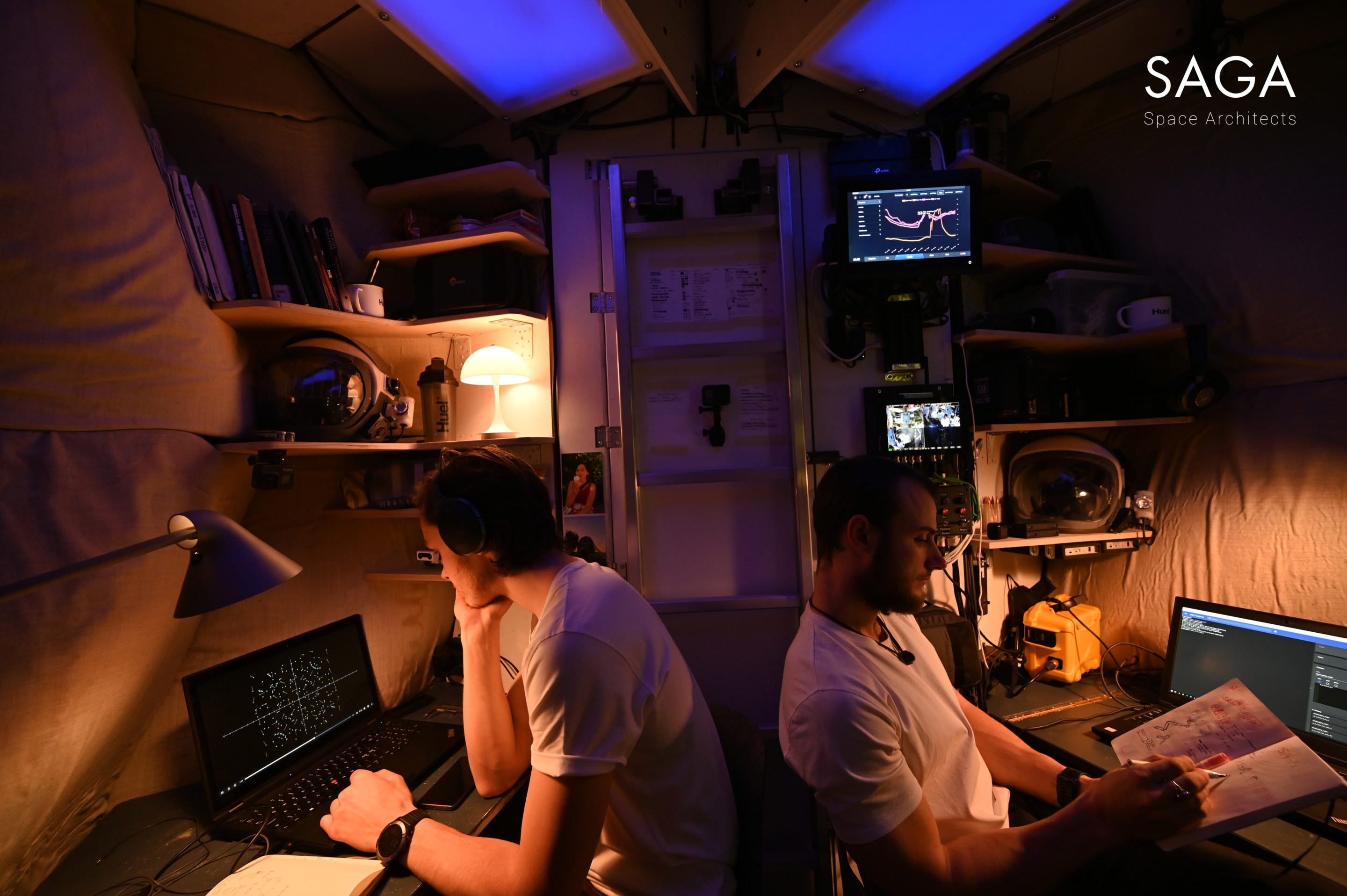
Following the expedition, several research projects, featured on SAGA’s website, were initiated to study the effects of long-term isolation and confinement on cognitive ability and team adaptation dynamics. These research initiatives continue to demonstrate how experiments designed for space can help to inform our understanding of life on Earth. As SAGA notes on its website, “Our generation spends 90 [percent] of our time indoors. The expedition is helping to discover solutions in well-being and indoor climate on Earth as well as in space.”
Circadian lighting systems utilizing LEDs are becoming increasingly common in both commercial and residential spaces. Ketra, Acuity Brands, Cree, Osram, Phillips, and USAI Lighting are just a few of the companies that have developed tunable or dynamic lighting technologies which allow users to control a light source’s color temperature. Software has also been developed to combat the effects of blue light emitted from electronic displays alongside the body’s circadian rhythm; these include f.lux, RedShift for Linux, Twilight for Android, Blue Shade for Amazon’s tablets, and Night Shift for Apple iOS, to name a small sample.
Circadian rhythms are notably 24-hour cycles, and the LUNARK mission presented a unique opportunity to study the effectiveness of lighting strategies within a confined environment, assuming all other light sources were accounted for. In an unconfined environment, light bulbs can be updated, and software can be downloaded to limit the emission of blue light from devices, but it’s unlikely that all light sources can be controlled as a person moves between buildings, vehicles, and streets over the course of a day. Consequently, though several of the lighting sequences Louis Poulsen programmed for the LUNARK habitat are similar to those programmed for office buildings—the day begins with cooler, high-intensity lighting, which shifts to warmer lighting in the afternoon, encouraging a person to wake up in the morning and become more alert during the day—one shouldn’t expect the same improved sleep or health benefits. The promise of more pleasant and comfortable vibes may be appealing enough to lead one to update their lighting schemes, however.
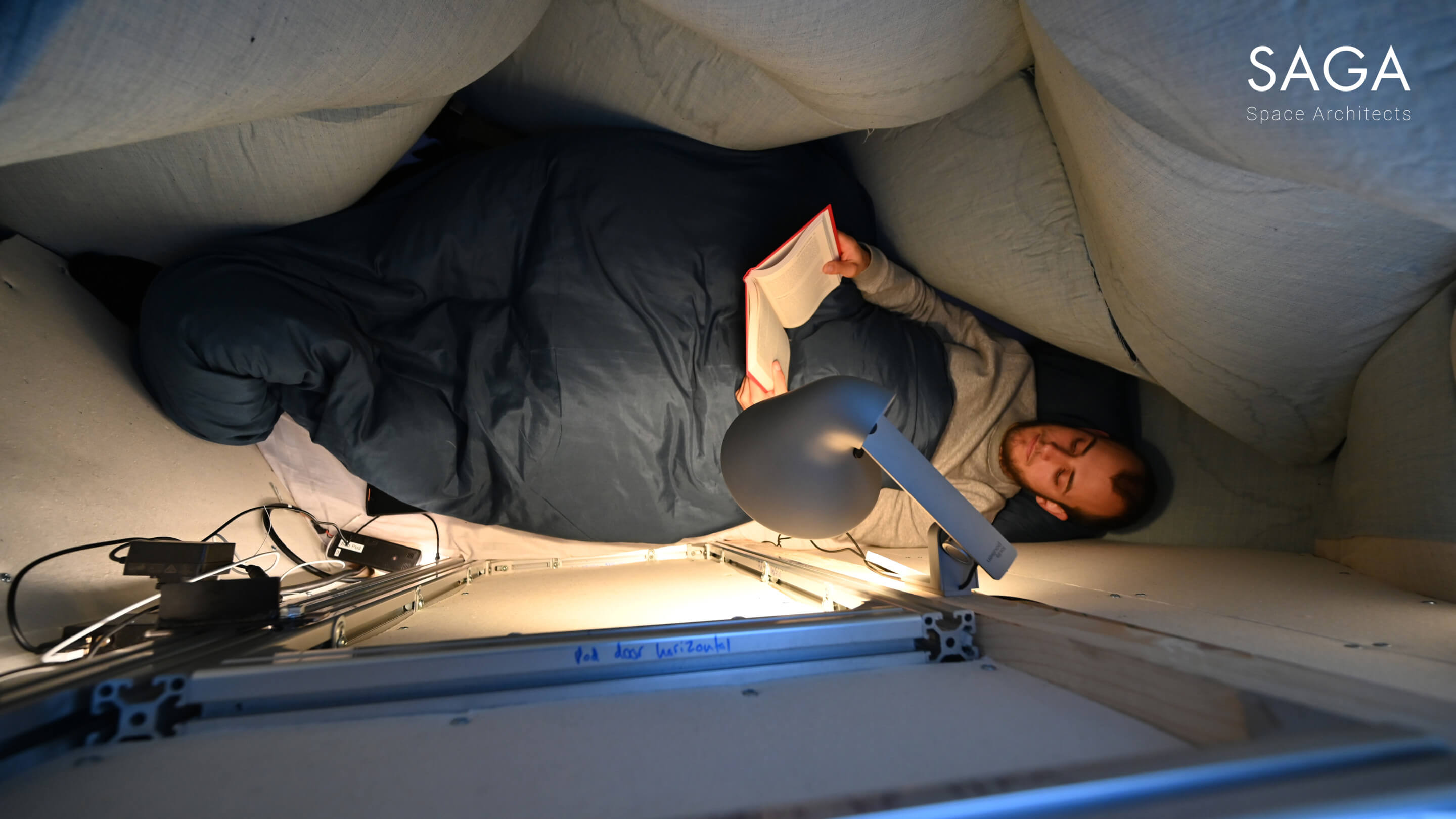
At the beginning of the interview with AN, Aristotelis mentioned a quote, anonymously attributed, that fed his early fascination with space: “Born too late to explore Earth, born too early to explore space.” It appears that the Reddit community has long since adapted the line into a meme (i.e., “born just in time for—”), but the quote could also lead one to wonder if spending large sums of money on spaceflight might be a distraction from or an evasion of the environmental devastation on Earth and our inability to address climate change.
Furthermore, one might ask, if Earth becomes unlivable for the vast majority, who then gets the opportunity to go to space? The title of the press release for SAGA’s mission reads, “LUNARK – Building and Testing a Moon Home for Everyone,” but this will likely remain an unattainable dream for at least the foreseeable future, when a ticket for a seat on Jeff Bezos’ Blue Origin rocket ride, which only went to the edge of the atmosphere, cost $28 million. Aristotelis, for his part, is adamant that solutions developed for space can be useful for Earth, though they don’t always relate to climate, and that our planet remains the best place for humans. Perhaps some of the challenges posed by space habitation will make people more appreciative of that.
